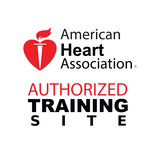Every 90 seconds another US citizen collapses suddenly from a disorganized heart rhythm. Such an occurrence is termed Sudden Cardiac Arrest and can be caused by a multitude of conditions. Sadly, due to lack of training and available equipment, the survival rate for these victims is 8 to 9 percent. Amazingly, however, the chances of survival for a friend or loved one in cardiac arrest can be as high as 75 to 80 percent with the right response and the right tools.
Good Things Come In Threes
There are three items that, when applied in a timely manner, can produce a positive outcome from a sudden death episode. As an Auburn University student or employee you should know that you most likely already have two out of the three items with you, and due to the work of the AU Emergency Management Department, the third shouldn't be far away.
If you witness someone suddenly collapse, find them to be unresponsive and not breathing or only gasping, here are the 3 items you need to save them:
1. your Phone

Call 9-1-1. Calling 9-1-1 immediately ensures that help is on the way. Police and rescue personnel have training in treating cardiac arrest, so activate the Emergency Response System early. The new American Heart Association guidelines also suggest that after calling 9-1-1, you put the device on speaker-mode so you can perform other life-saving actions while communicating with emergency personnel.
2. Your Hands

Immediate bystander Cardio-Pulmonary Resuscitation (CPR) prolongs the person's viability by artificially restoring blood-flow to the vital organs until a defibrillation shock can be used to help re-start the heart. Persons who have received CPR training should provide compressions and breaths according to their training. Those who have not received training are encouraged to perform chest-compressions only, or "Hands-Only CPR."
3. An Automated External Defibrillator (AED)

In a witnessed cardiac arrest event, the greatest chance of survival for the victim is within the first four minutes after collapse. During this period, if an AED is used to deliver a shock to the victim, the chances of the heart re-starting is around 75 to 80 percent. AEDs are designed so that anyone, regardless of training, can use them to save a life. Because seconds matter, time is of the essence so it is important to understand the basic steps to use an AED.
They are:
- Turn on the unit
- Connect and attach the defibrillator pads to the victim's BARE chest
- Press the shock button if advised and then begin CPR while following the voice prompts
AED Coverage At Auburn University

Auburn University is fortunate to have an Emergency Management Department that is proactive about it's Public Access Defibrillator (PAD) Program. You can even visit their site to view a map with locations of placed AED units, typically located in or near highly populated buildings.
Act With Confidence - Act Quickly
Combined in a timely manner, your phone, hands and an AED can be used to save a life when you witness a Sudden Cardiac Arrest event. Some things you can do to increase your confidence are to
- Look for AED units in the buildings you frequent most
- Consider attending a CPR AED class
Here's hoping you never need to use this advice, but hope is not a strategy. Plan ahead to respond appropriately when seconds matter and life is on the line.

About the Author:
Randy Boone is the founder of CarePoint Resources. He serves his community as a Fire Department Paramedic and Apparatus Operator. Randy and the CarePoint team of educators work to equip the workforce and public with lifesaving skills and information through CPR training and certification. www.carepointresources.com




